Scientific Method Teaching Resources
Teach the scientific method in your science classes this school year with printable worksheets, classroom science posters and more teacher-created resources made for elementary science teachers.
Explore the 7 steps of the scientific method, teach students how to form a hypothesis and draw conclusions as they start to think like scientists in the classroom!
New to teaching this section of the science curriculum, or just looking for some tips on engaging your students? Read on for a primer from our teacher team, including a look at the different steps of the scientific method and ways to explain the concept to your students.
What Is the Scientific Method? A Kid-Friendly Definition
Let's start with a student-friendly way to explain the method and why we discuss it in science class.
The scientific method is a process that scientists all around the world use hen they're conducting experiments and investigations. The method helps them to answer questions and solve problems.
But you don't have to be a scientist working on a major project to get the benefits of applying the method!
In science class, students might use the scientific method to explore the properties of different materials or to investigate the behavior of living organisms. Kids can also apply the method in math class, gathering data and analyzing patterns or designing experiments to test hypotheses.
What Are the Steps of the Scientific Method?
So how does the scientific method work? It's broken down into a series of steps that make it easy to follow.
- Ask a Question — At the start, scientists or student scientists ask a question about a topic they are interested in. For example, they may ask if plants grow better with more or less water.
- Research — Next, you conduct research to learn more about your question. This could involve reading books, watching videos or even talking to experts in the field.
- Form a Hypothesis — This is a new vocabulary term for most students. A hypothesis is another word for an "educated guess" that students make about what they think the answer to their question might be. They should use their research to inform this guess. In the example of the question of whether or not plants grow better with more or less after, a student may hypothesize that plants will grow better with more water.
- Test the Hypothesis — In the next step, students design and conduct an experiment to test their hypothesis. They will manipulate one or more variables and observe what happens. In this step, students should collect data and learn about "control groups," "independent variables," and "dependent variables."
- Analyze the Data — Once they've tested their hypothesis, it's time for your young scientists to look at the data they collected and organize it in a way that helps them draw conclusions. It may help to have your students make graphs or charts to make it easier to analyze the data.
- Draw Conclusions — Based on their analysis, it's time for students to draw conclusions about whether their hypothesis was correct or not. In this step, students should be making "inferences" and "predictions."
- Communicate Results — In the final step of the method, students share their findings with others, such as their classmates or you. This is also the step where students write "conclusions" and "abstracts."
Who Created the Scientific Method?
Are you looking for some background information to engage your students on this core concept of science?
Introduce them to the mystery behind just who created the scientific method! There are a variety of famous men who have been credited with making this world-renowned process of investigation from Italian astronomer and physicist Galileo Galilei to British philosopher Sir Francis Bacon. Others say an Arabic physicist named Ibn al-Haytham should get more credit for his role in giving us a way to systematically go about forming a hypothesis and testing it.
So what's the answer?
Why not challenge your students to do a little ... investigation?
- Free Plan
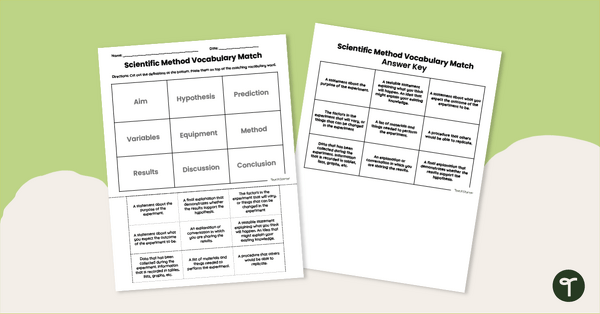
Scientific Method Worksheet - Vocabulary Match
Use a Scientific Method Worksheet to review key science experiment vocabulary words.
- Plus Plan
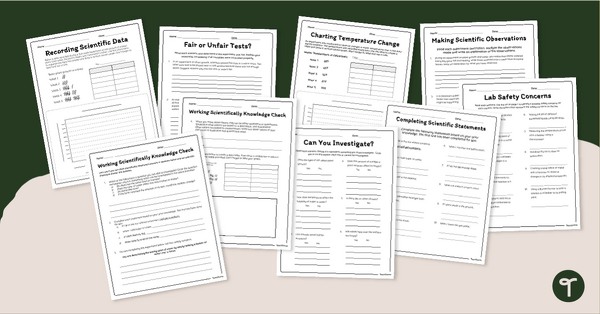
Process Skills for Science Worksheet Pack
Improve your students' skills for science class with printable Scientific Process Skills Worksheets.
- Free Plan
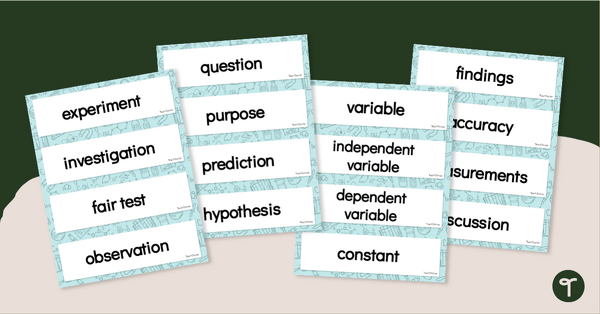
Scientific Method Word Wall Vocabulary
Introduce your students to vocabulary surrounding the Scientific Method with a printable science word wall.
- Free Plan
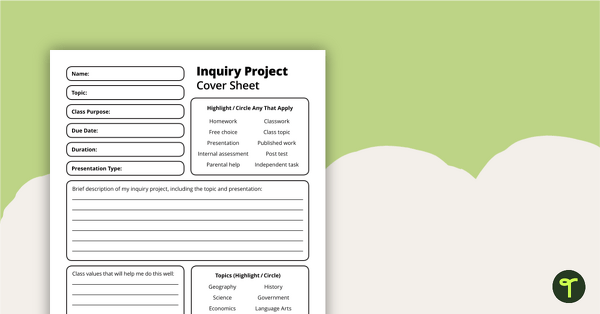
Inquiry Project - Template
A diverse template to help students craft inquiry questions to produce different types of research projects.
- Plus Plan
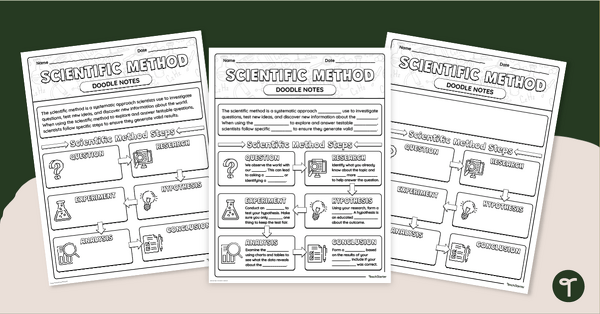
Differentiated Scientific Method Doodle Notes Templates
Use scientific method doodle notes to turn learning the scientific method into a meaningful note-taking session for students!
- Plus Plan
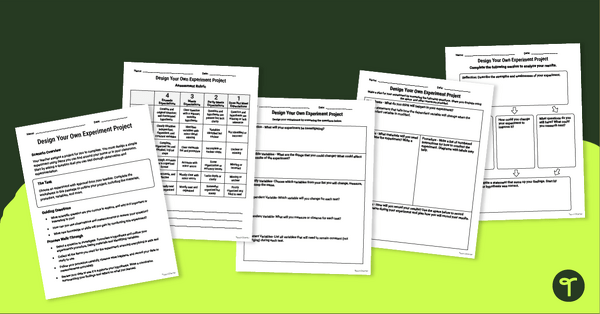
Design An Experiment Worksheet & Project Guide
Design your own science experiments and science fair projects with an experimental design project.
- Plus Plan
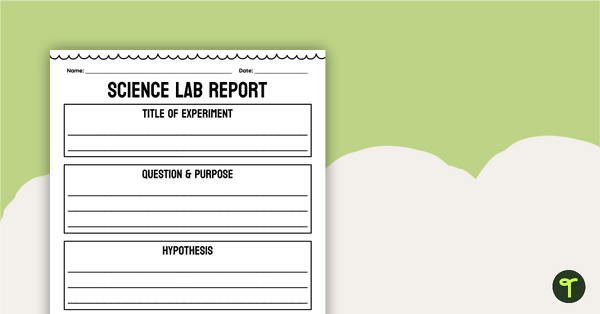
Science Lab Report Template
Use a Science Lab Report Template to help your students organize their findings in any scientific method lab experiment.
- Free Plan
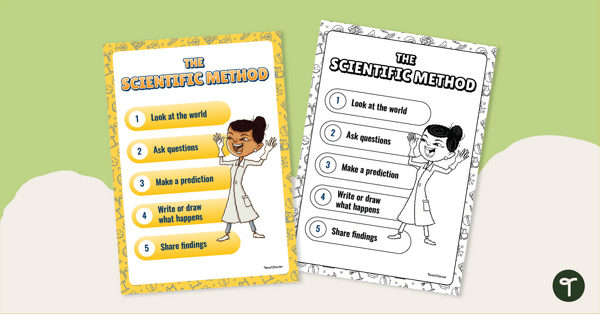
The Scientific Method Poster - Lower Grades
Teach the five steps of the scientific method to younger students with a Scientific Method Poster.
- Free Plan
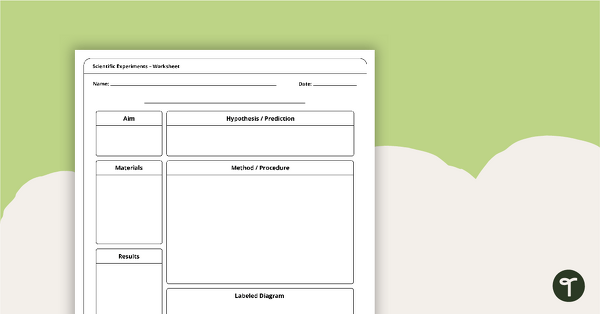
Science Experiment Recording Sheet
A recording sheet to use when completing a Science experiment.
- Plus Plan
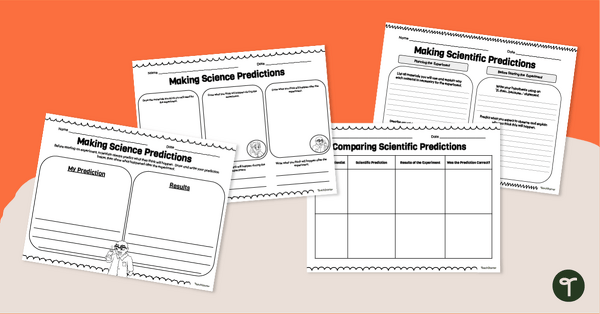
Making a Prediction in Science Worksheets (Differentiated)
Introduce your students to making predictions in science with a set of differentiated Scientific Prediction Worksheets.
- Free Plan

Starting a Scientific Investigation Worksheet
Help students begin the process of a scientific investigation with an introduction to the scientific method activity sheet.
- Plus Plan
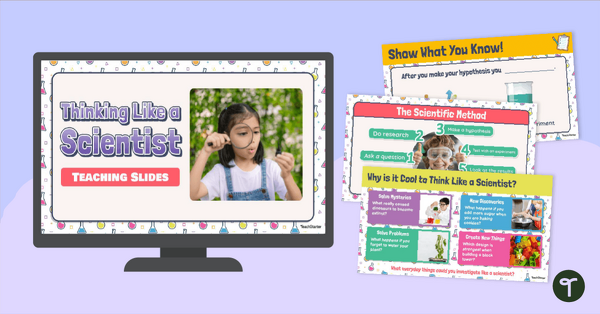
PowerPoint on the Scientific Method - Thinking Like a Scientist
Introduce your students to the scientific process with an interactive PowerPoint on the scientific method.
- Plus Plan
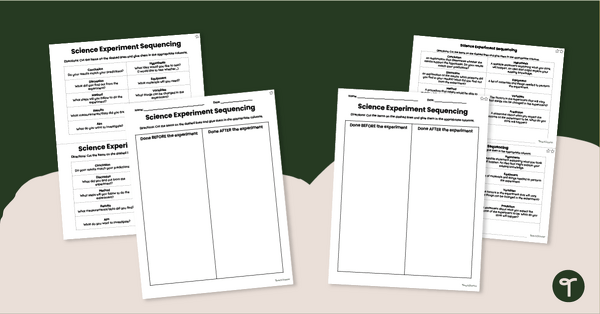
Experimental Design Worksheet - Scientific Method Cut and Paste
Sequence the steps in the scientific method with a pair of differentiated Experimental Design Worksheets.
- Plus Plan
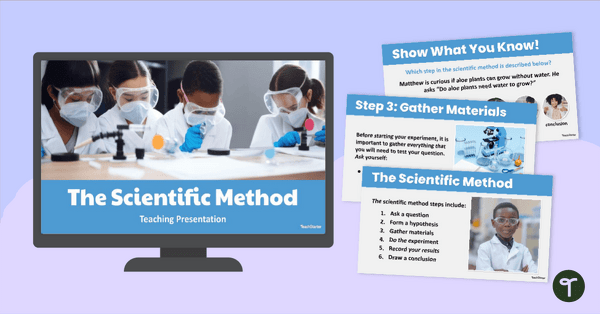
Exploring the Scientific Method Teaching Slides - Lower Grades
Complete your introductory scientific method lesson plan with a ready-made Scientific Method Teaching Presentation!
- Plus Plan

Scientific Method Experiment Observation Templates
Record scientific observations and results with a variety of Scientific Method Experiment Observation Templates.
- Plus Plan
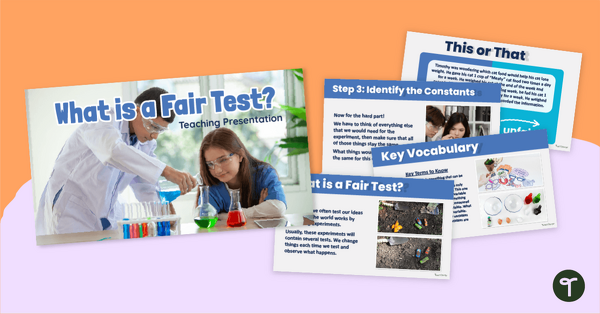
What is a Fair Test? Teaching Slides - 5th & 6th Grade
Teach your students about fair testing in science with an engaging 'What is a Fair Test? Teaching Slide Presentation.
- Plus Plan
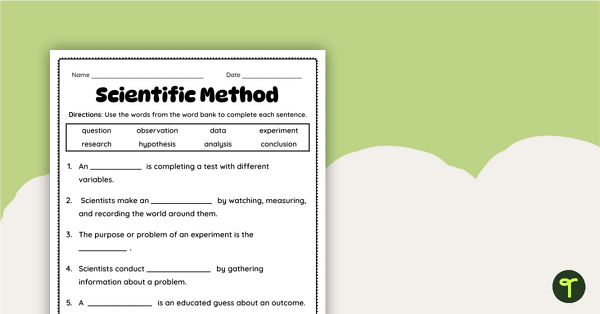
Scientific Method Cloze Worksheet
Review scientific method vocabulary with a printable Scientific Method Cloze Worksheet.
- Plus Plan
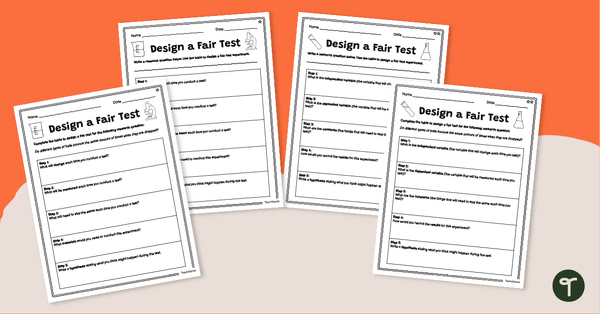
Design a Fair Test - Differentiated Experimental Design Worksheets
Use a differentiated experimental design worksheet to introduce your students to the concept of fair testing in science.
- Plus Plan
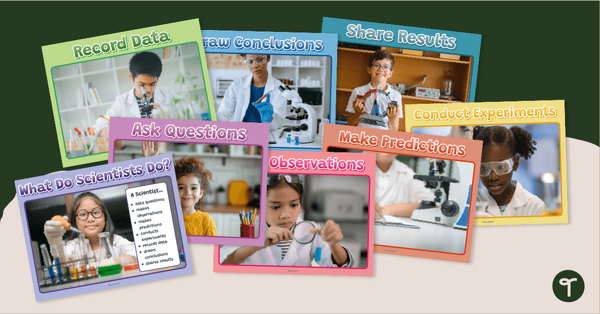
Scientific Method Chart Pack (K-1)
Help your little learners understand the scientific method with a set of ‘What Do Scientists Do? Kindergarten Science Posters.
- Plus Plan
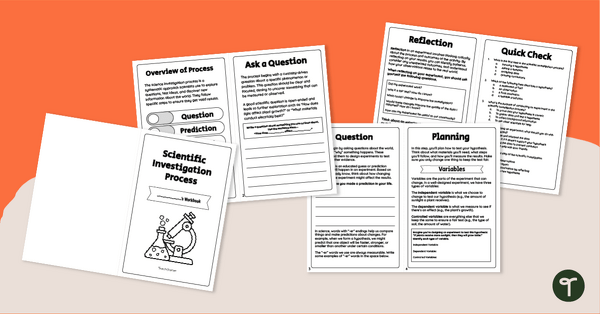
Scientific Investigation Process – Workbook
Print a Scientific Investigation Process Workbook to help your students learn and practice the steps in the scientific method.
- Plus Plan
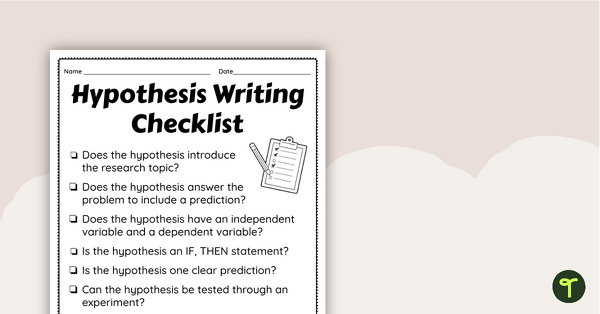
Scientific Hypothesis Writing Checklist
Use a Scientific Hypothesis Writing Checklist to help your students write clear and complete scientific hypotheses.
- Plus Plan
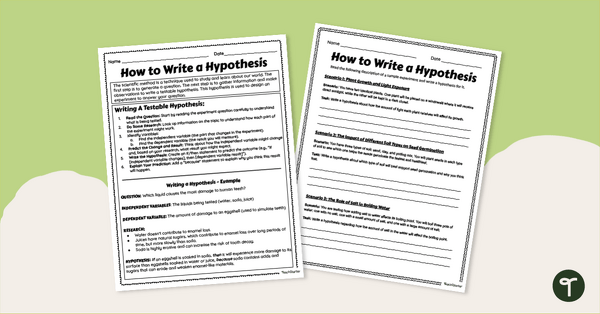
Hypothesis Writing Practice Worksheet
Teach your students to write a hypothesis with a printable writing guide and a hypothesis-writing practice worksheet.
- Plus Plan
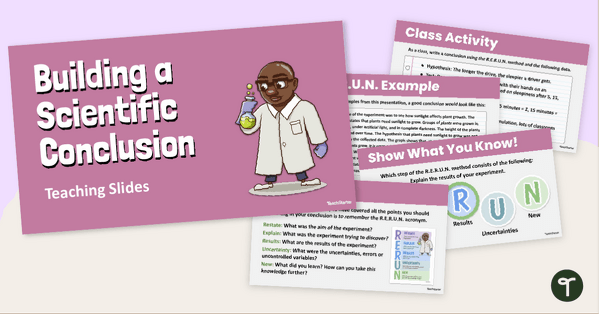
Building a Conclusion - Scientific Method Teaching Slides
Teach your students the R.E.R.U.N. method for writing a scientific conclusion with an interactive teaching slide deck.
- Plus Plan
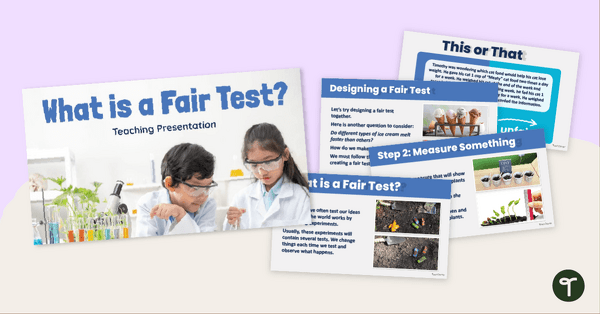
What is a Fair Test? Teaching Slides - 3rd and 4th Grade
Teach your 3rd and 4th graders about fair tests in science with an engaging 'What is a Fair Test? Teaching Slide Presentation.
- Plus Plan
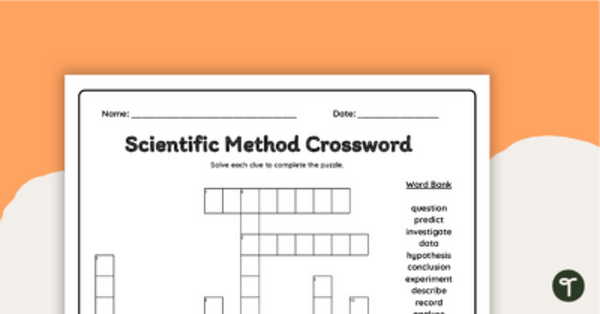
Scientific Method Crossword Puzzle
Use a Scientific Method crossword puzzle to review key vocabulary words surrounding science inquiry.
- Plus Plan
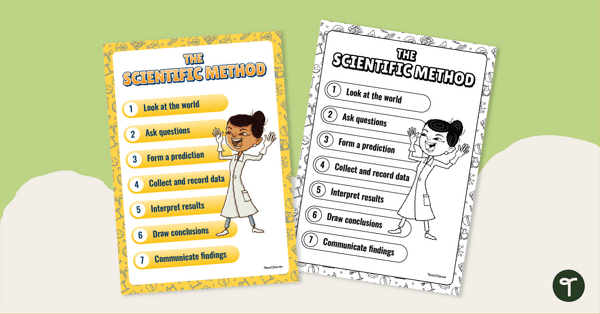
The Scientific Method Anchor Chart - Upper Grades
Teach the seven steps in the scientific process with a printable Scientific Method Anchor Chart
- Plus Plan
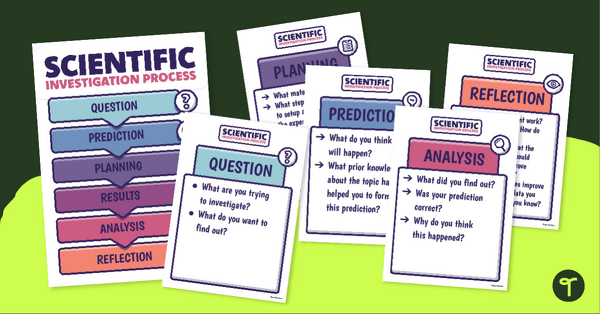
Scientific Investigation Process – Posters
Remind your students of the steps to the scientific investigation process with this set of 7 posters.
- Plus Plan
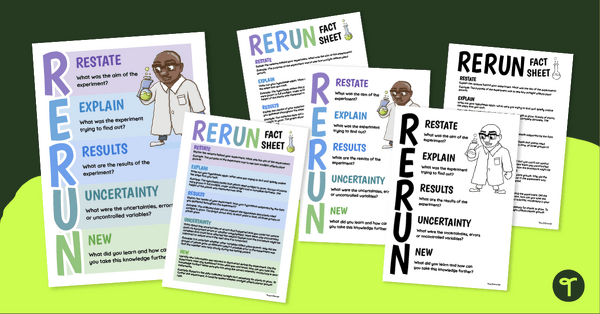
R.E.R.U.N. - Writing a Scientific Conclusion Anchor Charts
Introduce your students to the R.E.R.U.N. method for writing a scientific conclusion with a printable poster and fact sheet.
- Plus Plan
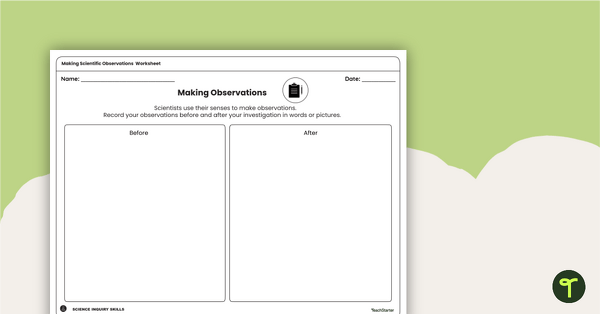
Making Scientific Observations Worksheets
Use this set of two worksheets to help your students record their own observations during science experiments and projects.
- Free Plan
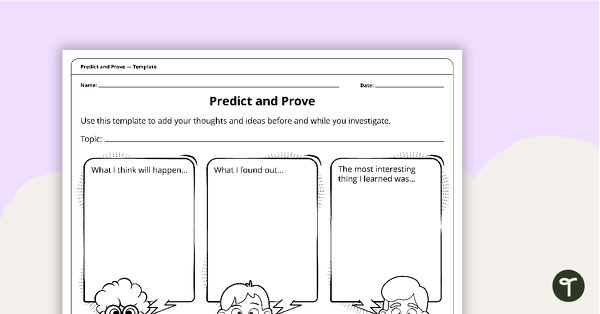
Predict and Prove – Template
A template to help introduce making a hypothesis before starting an investigation.
- Plus Plan
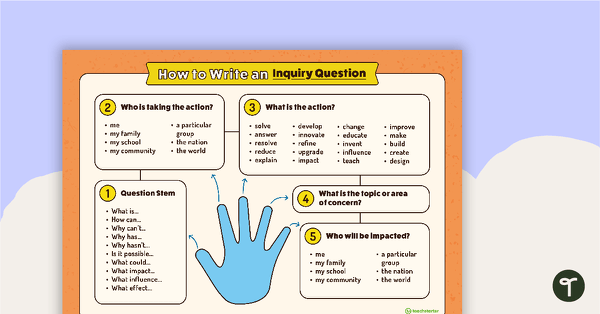
How to Write an Inquiry Question Poster
A poster demonstrating the steps involved in formulating a question for inquiry-based learning.
- Plus Plan
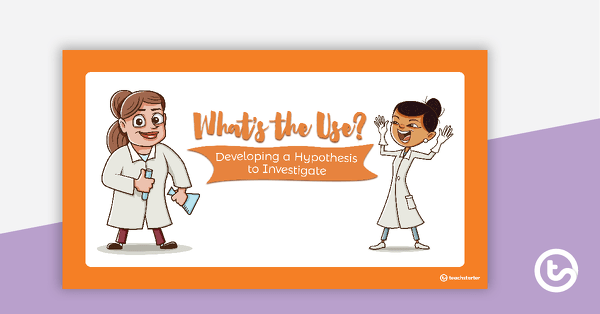
What's the Use? PowerPoint - Developing a Hypothesis to Investigate
A teaching presentation discussing the development of a scientific hypothesis.